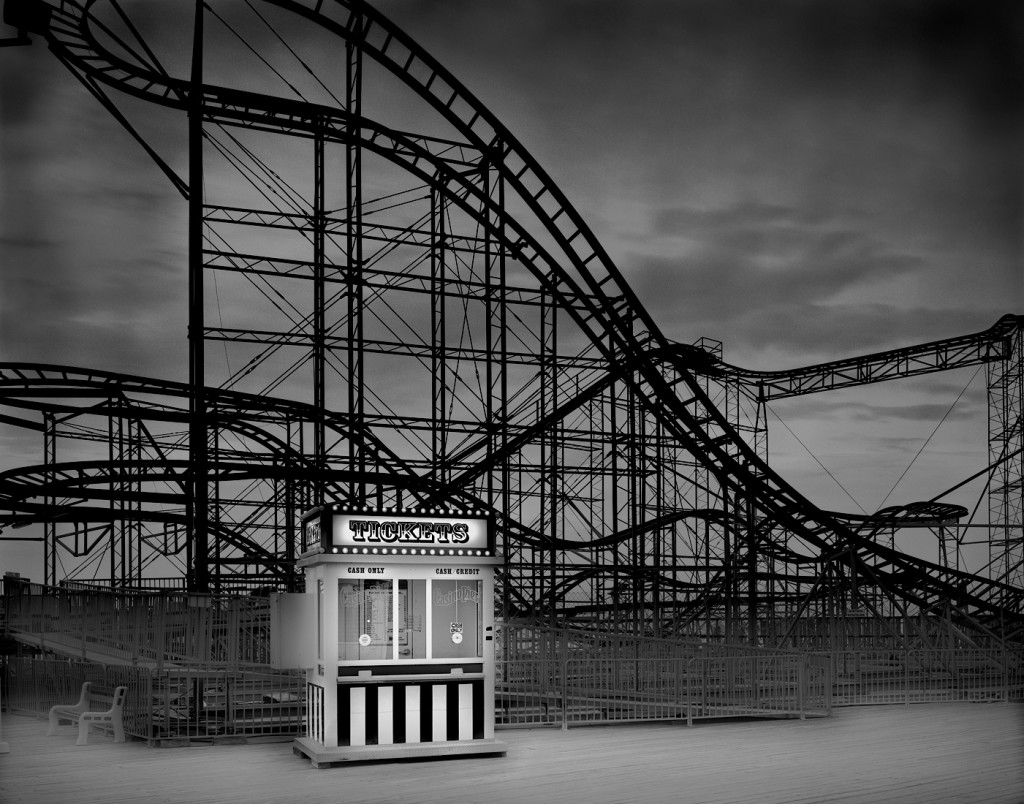
Article by Monovisions

Alternative Process, Architecture, Interviews
Michael Massaia (born in New Jersey, 1978) is a fine art Photographer and Printmaker who has spent the past nine years documenting areas and objects that never extend to far from his front door. Isolation, disconnection, and an attempt to put a spotlight on the ordinary is the constant in all of his work. Michael specializes in large format black and white film image capture, and large format Platinum printing, Silver Gelatin Printing, as well as digital image capture and printmaking. All of his images are “one shot” scenes (his images are never composited from multiple exposures). Michael works alone and is the sole craftsman from the instant the negative is exposed to the moment the final print is made.1. How and when did you become interested in photography?
I became Interested in photography as a result of going through long periods of insomnia. At night I would take long walks and eventually, I started carrying around a camera to document those long nights. Having a bit of an obsessive mind, I quickly started to explore every aspect of both image capture and printmaking (both analog and digital), that I could think of to perfect the vision I was seeking.
2. Is there any artist/photographer who inspired your art?
My first inspiration actually came from photo realist painters like Ralph Goings, Robert Bechtle, Charles Bell, and Richard Estes. As time went on, I became more involved with Platinum and Silver Gelatin Printing. Great printers like Irving Penn and Brett Weston have always inspired me.
3. Why do you work in black and white rather than color?
For me, it’s mix of technical and artistic reasons. From a technical point of view, large format black and white sheet film (when developed properly) can still produce some extraordinary results. One of the advantages being, recording huge amounts of information in highlights. This is crucial to my process. From an artistic point of view, it’s timeless, and still has a very specific way of transforming the mundane into something that warrants a second look.
4. How much preparation do you put into taking a photograph/series of photographs?
Huge amounts of preparation are required. (I try not to leave anything to chance). It all starts with an idea. Coming up with original concepts is very important to me. First, I will commonly do small drawings of my ideas and see if they translate well photographically into print. I then determine the best technical route to take in capturing the idea (film type, developer type, print type, etc….). The majority of my portfolios are shot with an 8×10, 5×7, and 4×5 view camera. My printing process is very crucial to my work and these day’s, it ranges from Split Toned Silver Gelatin, Gold Toned Platinum, and also digital printing techniques. My analog prints are all created via contact printing, using a series of registered negatives and masks. Each portfolio requires a different printing technique, and I allow the vision for that particular portfolio, to guide that process. From beginning to end, I do not outsource any part of my process. I do all the work myself.
5. Where is your photography going? What projects would you like to accomplish?
I just want to keep thinking of new ideas. Trying to find that one thing that seems to elude everyone else still excites me.
View Michael Massaia’s Website Here




